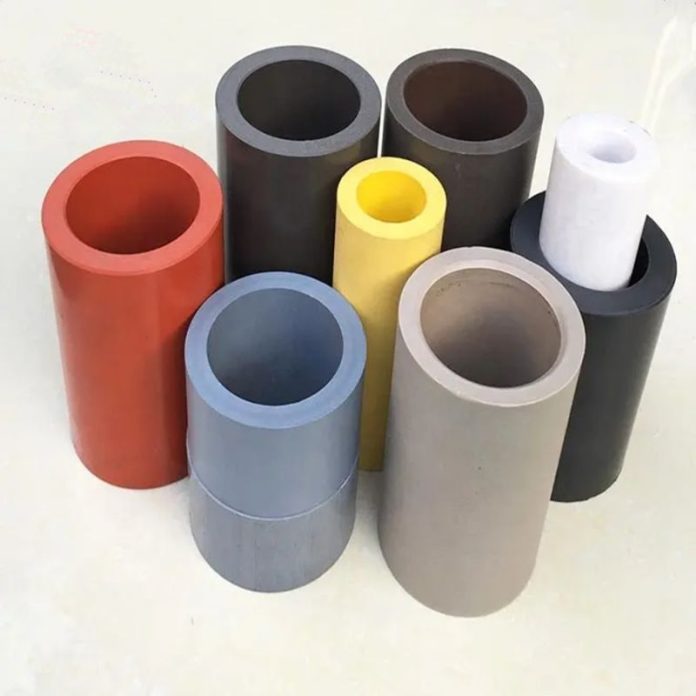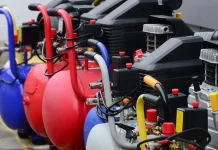Why Industries Pick Stainless Steel PTFE Over Traditional Materials
Industries that rely on high-performance components keep exploring material solutions for better durability, efficiency, and cost-effectiveness. Whether used in manufacturing plants or aerospace parts, these products must withstand elevated temperatures, pressures, wear, and other challenging conditions.
Among the many materials available, stainless steel-filled PTFE is considered a frontrunner among the many materials that fulfill these demands. But what exactly makes this composite material so effective? And why are industries increasingly choosing it over other materials? Let’s take a deeper look.
What Makes Stainless Steel PTFE Stand Out?
Polytetrafluoroethylene (PTFE), commonly known as Teflon, has long been a go-to material in numerous industries. However, its virgin form has limitations that render it less effective than alternative options. For example, it’s relatively soft and prone to deformation under heavy loads. The difference is more profound in applications demanding mechanical strength and thermal conductivity.
This is where powdered steel fillers come in. When incorporated into the PTFE matrix, they leverage the synthetic polymer’s desirable properties and add the strength and durability of stainless steel. This powerful synergy yields a high-performance material that can withstand more rigorous conditions without sacrificing the benefits of pure PTFE.
Industrial Challenges That Steel PTFE Addresses
Rapid advancements in industrial processes demand materials that can keep up with the increasing demands. Stainless steel PTFE solves several challenges faced by various sectors today, particularly:
· Overheating and Warping: Pure PTFE is known for being able to withstand extreme temperatures, but its mechanical strength weakens when operating under intense heat for prolonged periods. This poses an issue in industries where materials must maintain structural integrity under extreme conditions.
The metal fillers in stainless steel PTFE enable it to resist temperatures exceeding 260°C (500°F) without risking distortions. They also increase the polymer’s thermal conductivity, allowing it to dissipate heat more efficiently and prevent localized overheating.
· High-Friction and Wear Issues: Many industries need materials that can endure constant movement without deteriorating excessively. Although PTFE is often used for its low friction coefficient, it still tends to degrade in high-cycle operations.
Adding steel powder reinforces its durability without compromising its low-friction properties and effectively reduces surface wear. Moreover, it’s particularly favorable in applications where lubrication is limited or unsuitable.
· Protection From Chemical Attacks: Some industries rely on materials that won’t corrode when exposed to aggressive chemicals. Stainless steel-fortified Teflon is one of the go-to options for these applications. Its incredible resistance to various chemicals, acids, alkalis, and solvents makes it ideal for use in demanding and corrosive settings.
· Precision Engineering Needs: Modern industrial manufacturing demands materials with tight dimensional stability, especially when creating products with intricate geometries. Virgin PTFE is a conventional option for these applications, but it deforms over time and causes issues with precision and performance.
The steel fillers in PTFE provide better rigidity and structural stability than pure PTFE. These additives reduce the likelihood of warping or creeping under prolonged stress and maintain precise tolerances even in high-load applications. With this composite, manufacturers can machine complex shapes without worrying about the material’s durability.
· Stringent Regulatory Requirements: Industries involving food and medical supplies must abide by strict biocompatibility regulations to ensure product purity, safety, and quality. PTFE mixed with steel fillers doesn’t react with or contaminate sensitive products, making it a compliant and reliable choice for these sectors.
· Cost Optimization: As previously mentioned, stainless steel-infused PTFE boasts unmatched durability and resistance to chemicals and deterioration, all contributing to the components’ extended lifespan. It translates to decreased downtime, maintenance, repair, and replacement and increased cost savings.
Real-World Applications: Which Industries Use Them?
Thanks to its groundbreaking capabilities, stainless steel-filled PTFE has gained traction among countless sectors. Below are the industries that use it most:
· Aerospace: High performance and reliability are paramount in aerospace operations, whether for spacecraft or aircraft structural parts, engines, bearings, or seals. They must also be resistant to extreme temperatures and harsh chemicals, making stainless steel PTFE an excellent material of choice.
· Automotive: Components like piston rings, valve seals, and bearings for motor vehicles must be long-lasting, low-friction, and corrosive-resistant. Stainless steel PTFE offers these characteristics, enabling excellent engine performance and fuel efficiency. It also helps lessen emissions, which aligns with the industry’s growing focus on sustainability.
· Chemical, Oil, and Gas Processing: Stainless steel-filled Teflon is perfect for producing seals, seats, gaskets, and linings in pumps and valves that contain and transport hazardous substances. Its remarkable chemical inertness preserves these components’ integrity and longevity, prevents leaks and cross-contamination, and ensures the safety of operations.
· Food and Beverage: Like in chemical, oil, and gas processing, steel-reinforced PTFE’s resistance to contamination makes it valuable in food and beverage production. This property helps manufacturers ensure product quality and meet food safety and hygiene standards.
· Pharmaceutical: The equipment, packaging, and medical devices used in pharmaceutical production must be contamination- and chemical-resistant. Stainless steel-filled Teflon exhibits these properties and allows pharmaceutical companies to maintain the purity of their products and meet FDA regulations.
· Medical and Biotechnology: Creating biomedical devices and surgical instruments involves precision machining techniques and sterilization processes. Stainless steel PTFE enhances these products’ chemical resistance, durability, and biocompatibility. Thus, manufacturers can maintain high product quality from start to finish and meet safety and hygiene regulations.
Stainless Steel PTFE: A Material of the Future
As more industries push the limits of performance and efficiency, stainless steel-reinforced PTFE is an appealing choice for strength, durability, and resistance to extreme conditions. It’s also highly versatile, compliant with industry regulations, and enables further technological advancements across numerous sectors. Consult local manufacturers to learn how this PTFE composite can enhance your products and operations.










